Published November 18, 2019
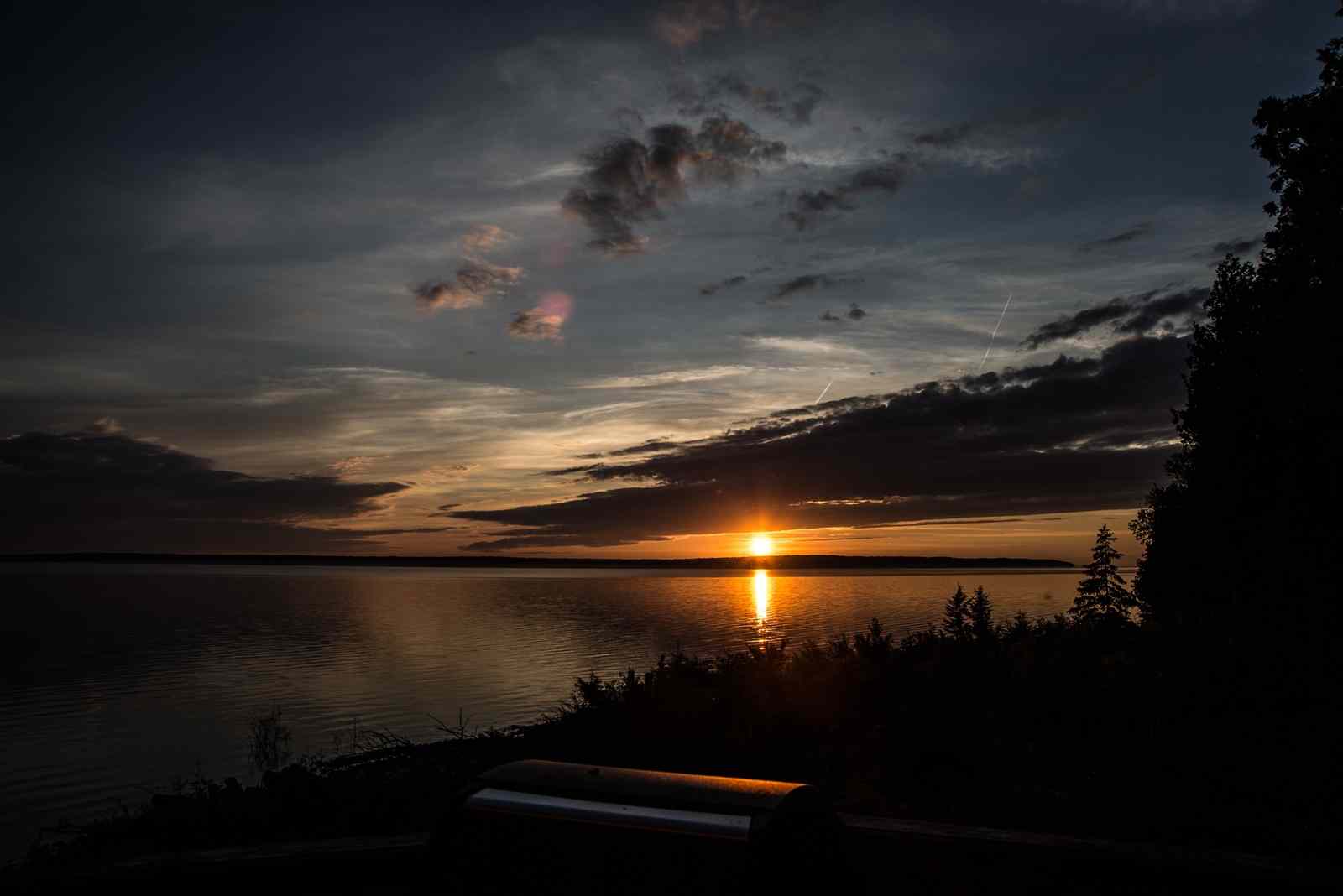
All about the Zhiibaahaasing First Nation Monitoring Hub
The Zhiibaahaasing First Nation Hub was established in the fall of 2018. It is one of Swim Drink Fish’s recreational water monitoring hubs. It was established thanks to funding from Environment and Climate Change Canada’s Great Lakes Protection Initiative .
Zhiibaahaasing First Nation hosts the Zhiibaahaasing monitoring hub. Zhiibaahaasing First Nation is located on the west end of Manitoulin Island, in the North Channel of Lake Huron. The First Nation wants to teach the community about water quality and the importance of water.
The monitoring hub provides opportunities for the community to learn about water, as well as monitoring science and lab work. There is year round programming that gives youth in the community the opportunity to learn about traditional knowledge, ceremony, and lessons about water.
In 2019 the Zhiibaahaasing First Nation Pow-wow was about water and the importance of protecting it.
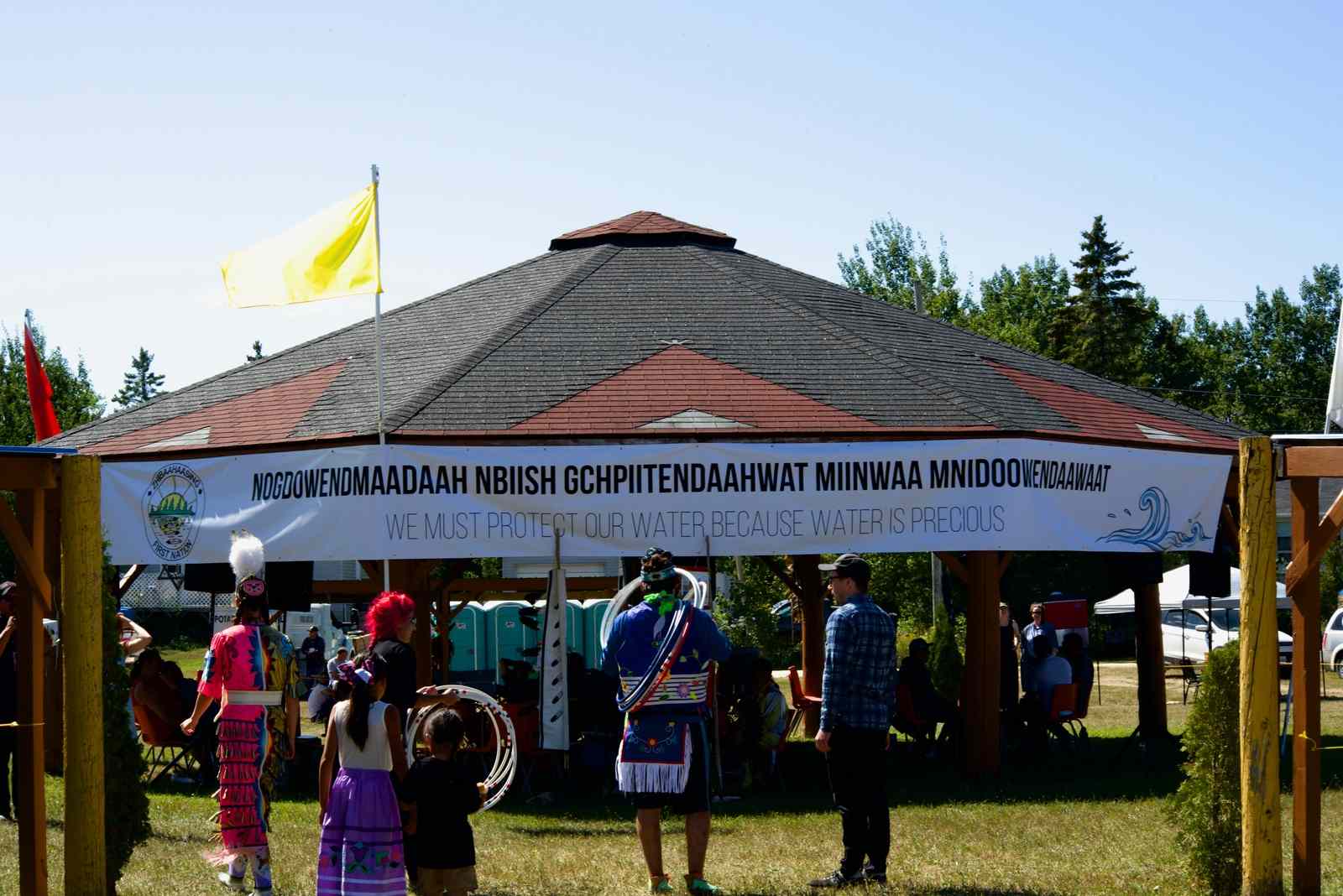
Who works with the monitoring hub?
Community members Chelsea Antoine and Jonathan Riberdy run the monitoring hub in Zhiibaahaasing First Nation. Jonathan is the Community Monitoring Project Manager and Chelsea is the Community Monitoring Coordinator. All hub coordinators and staff are employed by Swim Drink Fish and are supported by Swim Drink Fish staff. Chelsea has a background in Water Quality Science and Jonathan is Zhiibaahaasing’s Water Plant Operator. They make a great team, educating people about water quality.

The hub officially started sampling during the spring of 2019. From May through September, Chelsea, accompanied by youth from the community (who are now volunteer citizen scientists!), samples three locations, once a week.
“It is important for people in the community to know how water can change and be affected by different factors and getting involved with the water monitoring has helped them gain a better understanding of what’s happening at the beaches that are monitored. People are always surprised by the garbage that has washed up on shore.
We need to monitor to protect and keep the beaches and this waterbody as clean and as close to the original conditions as possible.”
Chelsea also holds lessons about on different topics, related to water. An elder from the community often joins the youth and Chelsea, sharing traditional knowledge. These lessons are held by the water and continue throughout the winter (although in winter, the lessons move inside for the most part).
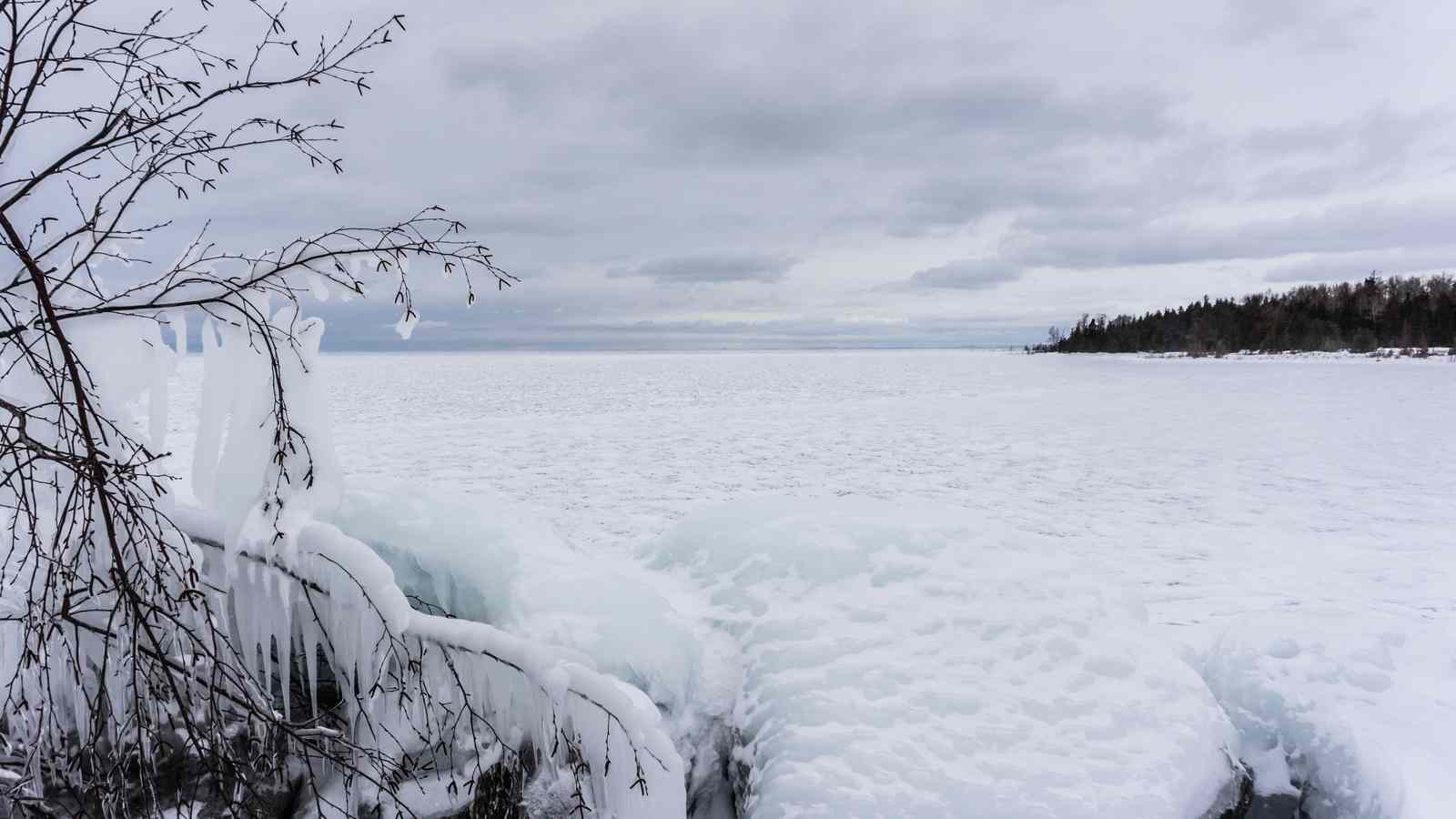
How is the water monitored?
This hub, like all the Swim Drink Fish hubs, follows the local standard for recreational water quality. For the Zhiibaahaasing First Nation Hub this is the Ontario provincial standard, Operational Approaches for Recreational Water Guideline, 2018.
A minimum of five samples are taken at each location. The hub is monitoring the water for E. coli: a bacteria found in the digestive tract of warm blooded animals. E. coli is present in the feces of humans and other mammals, which means the presence of E. coli can indicate –you guessed it– poop from sewage and stormwater. High levels of E. coli can put our health at risk and can mean the presence of other harmful contaminants found in sewage, such as pathogens, heavy metals, and chemicals.

It takes 24 hours for the samples to process at which point the results can be analyzed and posted to Swim Guide where they are available to the public. Anyone can also access the raw data through Swim Drink Fish’s open data portal. The 2019 test results from all three of the Zhiibaahaasing First Nation Hub’s locations show very low levels of E. coli.
Learn more about how the hub monitors and processes samples.
Where does the hub monitor?
Three locations are monitored by the Zhiibaahaasing First Nation Hub: Gaanogwong Apgishmok, Rocky Beach, and Sandy Bay

Gaanogwong Apgishmok is a two minute drive from the lab, the other two locations are on Cockburn Island and getting there is a 30 minute boat ride (or more) from Manitoulin Island.
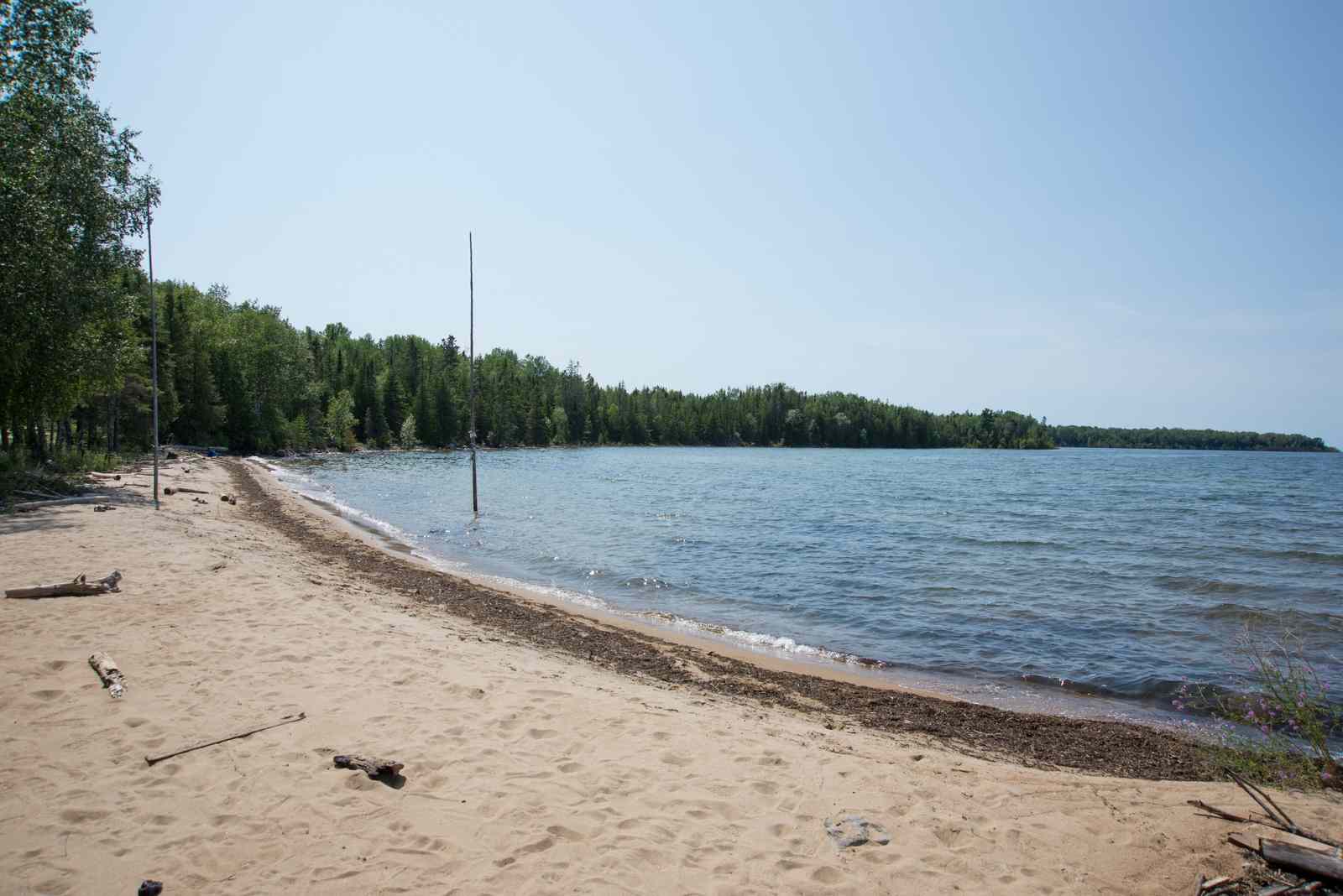
While the hubs monitor rain or shine (unless there is thunder or lightening), the sites on Cockburn Island can depend on the wind. There are days that the wind makes waves that are simply too big for smaller boats to make it over the ocean-like Lake Huron. In fact, if Jon and Chelsea are able to make it over but not back because the weather has turned, they have a back-up lab at the community’s cabin on Cockburn Island so they can process the samples there.

On the days they do make it over, the trip is well worth it. The island is home to some truly amazing swimming, if you’re okay with slightly cooler temperatures.
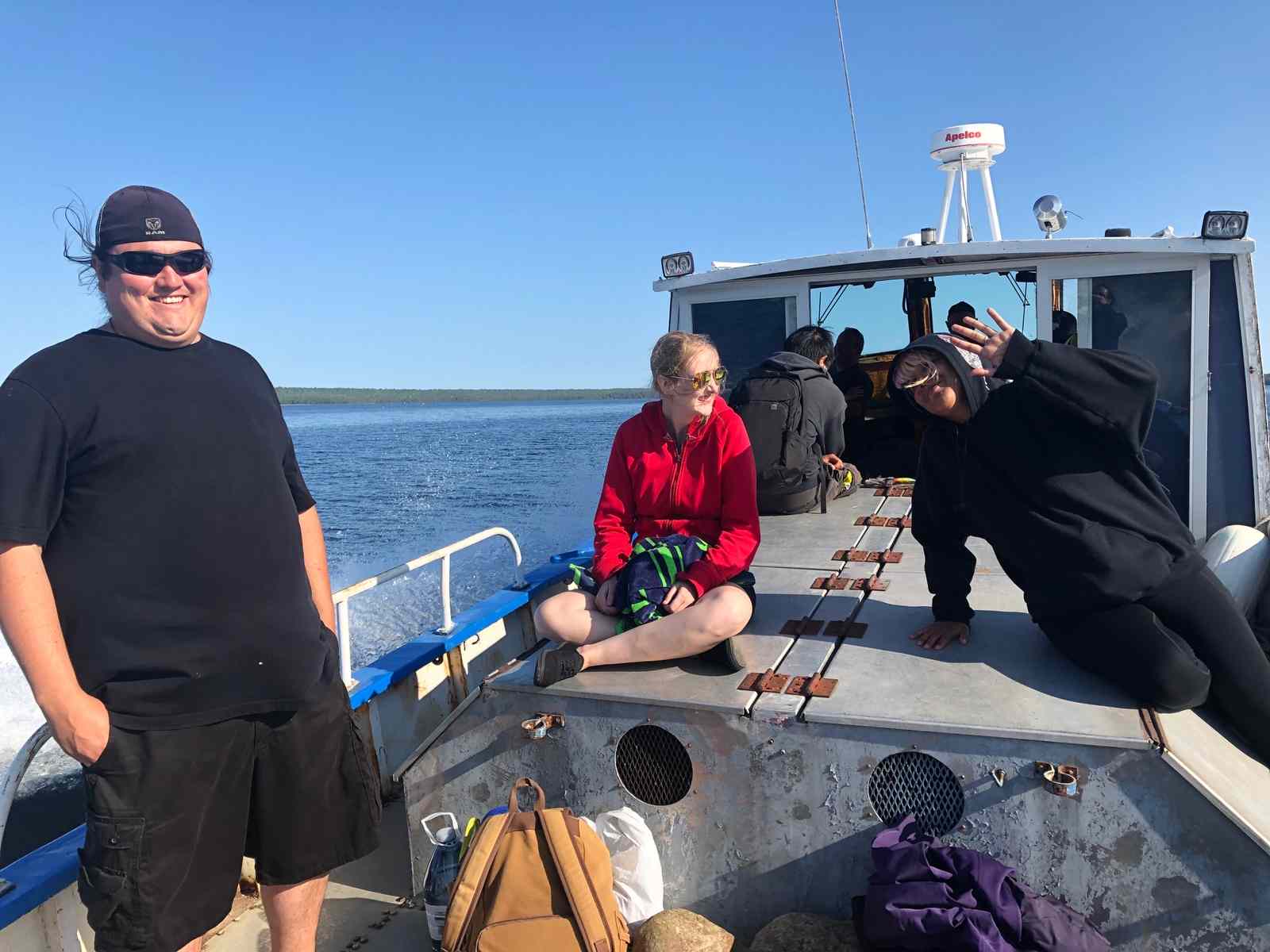
1
Cockburn Beach 1 (Rocky Beach)
This beach is located in the Cockburn Island reservation. The beach is private and you’ll need to contact the Zhiibaahaasing Band Office for permission to visit. This land is part of Zhiibaahaasing ancestry, so it means a great deal for the community to be able to know their roots. This beach is rocky, but also has docks for visitors to collect water and to swim and fish.

2
Cockburn Beach 2 (Sandy Bay
This beach is located on the south side of Cockburn Island and is known as the Sandy Bay. This beach is important to the community because the elders can bathe here when visiting Cockburn Island. It is very accessible for everyone. This is a freshwater beach on the shores of Lake Huron and is remarkable for its completely sandy surroundings.
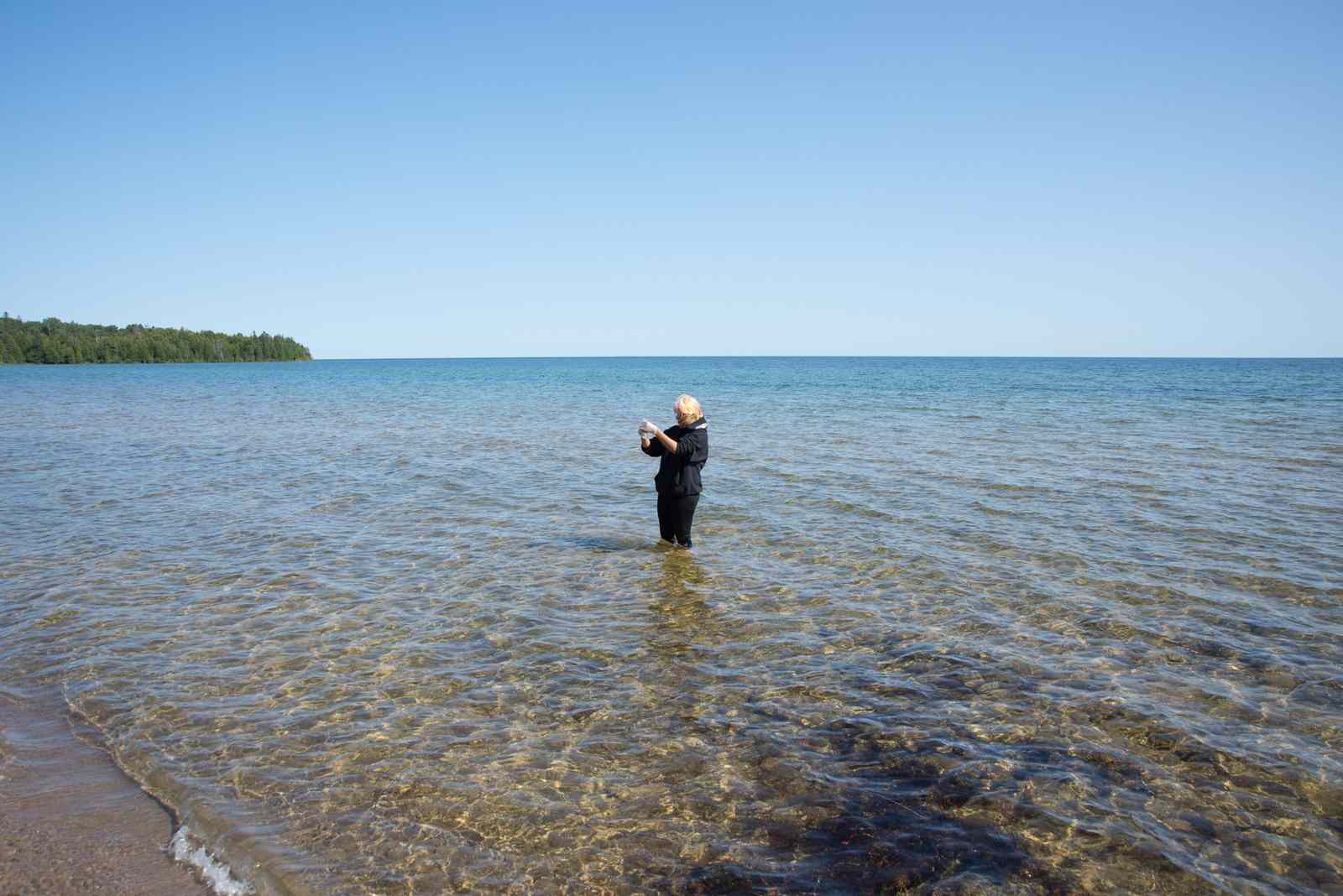
3
Gaanogwong Apgishmok
This beach is located on the west end of Manitoulin Island and is located in the in Zhiibaahaasing First Nation community. This beach is commonly used for activities like fishing and swimming. The community water treatment plant is also located at this beach, which is where the community gets its drinking water. This freshwater beach is very important to the community for that reason.

In 2019 the community named this beach ‘Gaanogwong Apgishmok’. The english translation is ‘beautiful sunset’.
Non-community members must contact the Zhiibaahaasing First Nation Band Office prior to visiting any of these beaches. You can do so by reaching out the Swim Drink Fish head office at 1-416-861-1237.
You can learn more about the Zhiibaahaasing First Nation Hub or find out how you can get involved by reaching out to them here.
Want to learn more about the other Swim Drink Fish Great Lakes monitoring hubs?
Read Citizen Science in the Great Lakes for more about how the project came to be.
Learn about the Lake Erie - Niagara Hub
